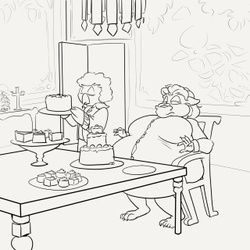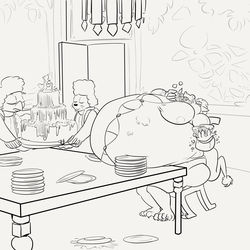Sign In
Close🧞♀️ Genie Month continues! https://forms.gle/zfLzF5Ar16vnnCub8
|> Streamed on https://picarto.tv/xinjinmeng
GAME DRAGON(Zevo Toys, 1988)
The latter-half of the 8-bit console generation saw the console makers eager to avoid another market crash. But the laws of the NA market made it legal for third parties to make their own game content. To stem the flow of "garbage games", Encom and other console makers used tactics such as "lockout chips" that might prevent third-party cartridges, or market pressure on toy-stores to prevent their distribution.
The latter-half of the 8-bit console generation saw the console makers eager to avoid another market crash. But the laws of the NA market made it legal for third parties to make their own game content. To stem the flow of "garbage games", Encom and other console makers used tactics such as "lockout chips" that might prevent third-party cartridges, or market pressure on toy-stores to prevent their distribution.
And speaking of garbage games, Zevo Toys' first attempts to break into the home video-game market were with licensed games that leaned on popular movie or comic franchises, or with imported games with hasty and strange localizations. Zevo would not have a breakout success before the "Game Dragon", a plastic and microchips boondoggle if there ever was one. This device was inserted into an Encom TV Game's cartridge slot, and then the cartridge was inserted into another slot. The Encom also required its own power supply.
Once installed, a player could enter a string of obscure alpha-numeric codes to over-ride the memory state of the game, effectively hacking the console. If a player were patient enough to navigate dozens of screens, they could enable all kind of aberrant behavior in their games. Changing values in key memory locations might let the player start the game at any level, not just the starting one. Disabling collision detection could make a player invincible. It wasn't long before players discovered that the Game Dragon could also bypass the game-lockout hardware if the right codes were input into the right registers.
As the 1990s wound on, and 16-bit consoles replaced these older ones, Zevo advertised the "Game Dragon 2". This new model only included the modification abilities of the Game Dragon but also its own motherboard of many of the chips common to later-gen 8-bit Encom games. Zevo's theory was that they could then sell "Hoard" cartridges at a fraction of the cost of full-sized ones, as the hardware in the Dragon 2 already had the necessary cihps. Test marketing proved the Dragon 2 to be a disaster: the Hoard cartridges confused customers because they required extra equipment, and owners of the Game Dragon 1 mistakenly thought that Hoard games would work in their units. The Hoard lineup of games were also rather lackluster ports of games from UK developers (Nullarbor House, Greendale, Psytropic) that weren't palatable to modern gamers' tastes. Most of the Dragon 2 units were unsold and are presumed destroyed.
Today, the Game Dragon 2 is highly sought by collectors. Finding one is made more difficult by the number of bad actors listing their Game Dragon 1 units for sale, which was far more popular and thus has little value.
(Deepfake for Dex the Dragon, for Genie Month!)
Submission Information
- Views:
- 655
- Comments:
- 0
- Favorites:
- 0
- Rating:
- General
- Category:
- Visual / Other




